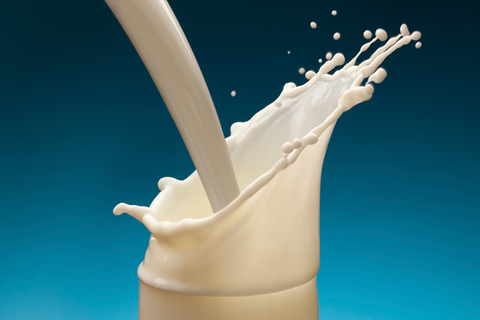By Emily C. Harrison MS, RD, LD
www.dancernutrition.com
Food trends come and go, and the latest fad involves avoiding or limiting dairy. Milk and all dairy products have been historically considered nature’s perfect food, but some nutrition researchers don’t believe that this is true. Current US government recommendations are to consume three servings of dairy per day. Is that what the body really needs or is that what the dairy industry wants? Here, I aim to briefly present both sides of the argument so dancers can make a more informed decision for themselves.
The Good Side of Dairy
One cup of 1% fat milk has only 100 calories but a full serving of protein. Whey and Casein are the two main proteins in milk. Other key nutrients found in dairy products are calcium, phosphorus and potassium, and many milks are fortified with vitamins A and D. These are important nutrients for dancers, and whey protein has been shown to help in recovering from a strenuous workout. Some studies have suggested that milk products can help with weight loss when coupled with a healthy diet and exercise. Probiotics added to yogurt are immune boosting and good for gastrointestinal health.
Some Problems with Dairy
Nutrition researcher T. Colin Campbell, PhD recently published his book “The China Study” in which he presents numerous studies that not only demonstrate that milk is not nature’s perfect food but that it is actually linked to serious health problems. He presents evidence suggesting a link between the milk protein casein and cancer in animal studies and in large population studies. Other studies show a relationship between dairy products and decreased immune function, more ear infections in children, and higher risk for autoimmune diseases such as Type-I diabetes and Multiple Sclerosis. In practice, I see some nutrition clients choose to avoid dairy because it makes their stomachs hurt or because they have philosophical or environmental objections to how cows are treated or given hormones and antibiotics.
Protein
Some people consider the protein content of dairy to be a good reason to consume dairy products or whey protein supplements. These proteins are excellent sources of muscle building amino acids, however, most dancers get plenty of protein through diet alone. Excessive protein intake, particularly through animal protein or supplemental protein shakes or pills, has been associated with calcium loss in the body. Since dancers are already at high risk for stress fractures, the last thing you want to do is encourage your body to pull calcium out of the bones by consuming more protein than the body needs.
Bone Health
Dairy alone isn’t the magic answer we had hoped for in preventing weak bones. Yes, calcium is a very important mineral for dancers. But it is also found in leafy greens, broccoli, almonds, almond milk, sesame seeds, soy milk, and tofu. Dancers need to make sure they eat a variety of calcium sources every day and not just rely on dairy. These plant-based foods are also immune boosters and may help prevent disease. So if you are sensitive to dairy, be mindful to get calcium from other sources.
Dairy Allergy
One of the most common food allergies or intolerances is to cows’ milk. An intolerance is an inability to digest the milk sugar lactose. The body might get stomach pain or gas because it doesn’t produce adequate lactase enzyme. However, an allergy is an immune reaction to a protein in milk. Some people can be very sensitive to these proteins and some may not even know it. Atopic eczema is one example of an immune system reaction to food allergy.
If dancers do choose to consume dairy products, I do recommend limiting consumption. Choose a variety of calcium sources and low fat options, and never consuming raw or unpasteurized milk.
For further reading see:
Campbell TC, Campbell TM. The China Study. BenBella Books, Dallas Texas. 2006.
Emily Harrison
 Emily Cook Harrison MS, RD, LD
Emily Cook Harrison MS, RD, LD
Emily is a registered dietitian and holds both a bachelor’s and master’s degree in nutrition from Georgia State University. Her master’s thesis research was on elite level ballet dancers and nutrition and she has experience providing nutrition services for weight management, sports nutrition, disordered eating, disease prevention, and food allergies. Emily was a professional dancer for eleven years with the Atlanta Ballet and several other companies. She is a dance educator and the mother of two young children. She now runs the Centre for Dance Nutrition and Healthy Lifestyles. She can be reached at emily@dancernutrition.com www.dancernutrition.com
Top Photo: © Valentyn75 | Dreamstime.com
















Pingback: 25 Gluten-free and Dairy-free Snack Ideas | Dance Informa Magazine